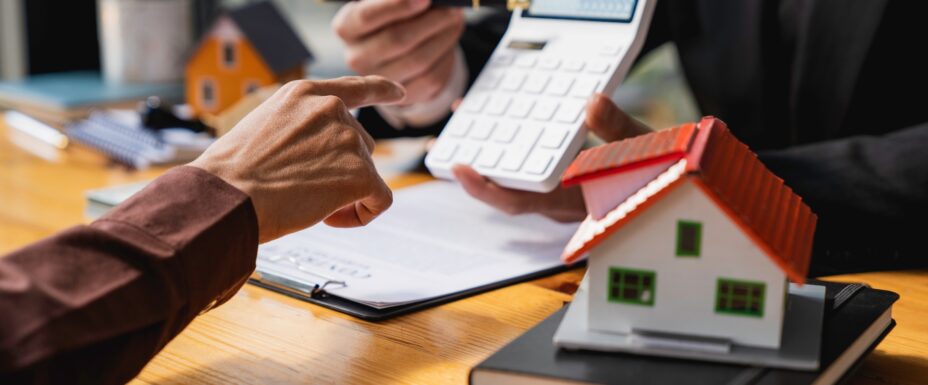What is a 1031 Exchange Property?
Reviewed by: Brandon Brown
Investing in real estate is how 90% of millionaires have built their wealth.1 If you’ve already experienced some financial success on your investment journey, you already know that with accumulated wealth comes the collection of taxes, as well. But wouldn’t it be nice if there was a way to defer capital gains taxes on your investment property until a later date? Thanks to Internal Revenue Code Section 1031, there is.2
Any real estate investor has questions about navigating the industry. Questions like, “How can I avoid capital gains tax on a home sale?” and “Do you pay capital gains tax on inherited property?” often arise when contemplating how to strategically sell property. A 1031 exchange allows you to defer capital gains taxes on the sale of an investment property by using revenue from the sale to invest in a similar replacement property—while enjoying a host of other benefits, too.
So, what is a 1031 tax exchange property? Below, we’ll explain which properties qualify for a 1031 exchange, the process of a 1031 exchange, and its most compelling benefits.
What is a 1031 Property?
What is a 1031 exchange property, and how can you manage it properly? To understand a 1031 tax exchange, it’s important to be familiar with a few key terms involved in the process, such as:
- 1031 property – A 1031 property is an investment property that’s sold and replaced using a 1031 exchange. Properties that qualify for a 1031 exchange include those that are held for investment purposes, such as a commercial building or a single-family home. For example, if you’ve invested in a vacant field for business purposes, you can sell the property and use the profits to replace the land with an office building.
- 1031 exchange – A 1031 exchange is a legal process where you sell one investment property and use the proceeds to buy another one of “like-kind,” deferring capital gains taxes in the process.
- Capital gains – Capital gains are the profits made from the sale of an investment property. By deferring capital gains taxes using a 1031 exchange, you can hold onto more of your wealth and use it to invest in new properties that offer even greater returns.
1031 Exchange Rules
The 1031 tax code is complex. There are many rules you must follow to a tee to ensure you qualify.
Here are a few of the most important rules involved in 1031 exchanges:
- Rule 1: You need to work with a qualified intermediary – A qualified intermediary (QI) is a person or company who agrees to hold your proceeds from the sale of your investment property during the exchange. Once you decide to purchase a replacement property, your QI will transfer the funds to its seller on your behalf.
- Rule 2: You must exchange “like-kind” properties – According to Investopedia, like-kind properties are “two real estate assets of a similar nature regardless of grade or quality that can be exchanged without incurring any tax liability.”3
This definition is more lenient than it seems. For example, you can exchange an apartment complex for a piece of undeveloped land or an industrial building for a single-family home. The like-kind properties just need to be used for investment purposes, rather than personal use or resale. - Rule 3: You must buy a property of equal or greater value to defer all capital gains taxes – To defer all of your capital gains taxes during a 1031 exchange, you need to replace your current investment property with a new property of equal or greater value.
This way, you won’t have any leftover sale proceeds, which are referred to as “boot.” While you can still use a 1031 exchange to purchase investment property of lesser value, the leftover boot will be taxed.
- Rule 4: Identify and report replacement properties within 45 days – A 1031 exchange is a time-sensitive process. After selling your original investment property, you must find potential replacements for it within 45 days. You need to report these replacements to your QI in writing.
The IRS allows you to identify up to three properties as potential replacements. If you want to identify any more than that, the properties’ combined value can’t exceed 200% of your original property’s value.
- Rule 5: Close on your replacement property within 180 days – You have 180 days after closing on your original investment property’s sale to close on a replacement. If it takes longer than that, you won’t be able to defer your capital gains taxes.
These are just a few of the rules that you need to follow to qualify for a 1031 exchange. If you want to use a 1031 exchange property as a vacation home or primary residence down the line, the IRS has even stricter regulations. That’s why it’s important to work with a qualified legal professional throughout the process. With the right advisor, you can even apply for a reverse exchange, which is when the taxpayer can secure the new property before selling the old property.5
The Steps Involved in a 1031 Property Exchange
So, what happens when you sell a 1031 property? To review, here’s a brief overview of the steps you’ll need to take to pursue a 1031 exchange:
- Step 1: Consult with your financial advisors about pursuing a 1031 exchange
- Step 2: Hire a QI
- Step 3: Sell your current investment property
- Step 4: Transfer the proceeds from the sale to your QI
- Step 5: Identify your replacement properties within 45 days
- Step 6: Purchase your new investment property
- Step 7: Close on the new property within 180 days
- Step 8: Report the exchange to the IRS using form 88244
You can repeat this process as many times as you like. There’s no limit to how many times you can use a 1031 exchange.
Additionally, if you die before you sell your 1031 exchange property and realize your investment, your deferred capital gain taxes will be forgiven, allowing your heirs to inherit the property without the burden of a capital gains tax.
1031 Exchange Benefits
In addition to allowing you to defer capital gains taxes, a 1031 exchange can help you:
- Afford a new investment property that offers better returns
- Diversify your assets by replacing your investment property with multiple investment properties
- Simplify your estate planning by consolidating several investment properties into one
- Exchange an investment property that you manage yourself for one that already has established property management in place
Here’s an additional tip for you: You can sell multiple investment assets and still defer capital gains taxes through the 1031 tax-deferred exchange.6
Reminders To Reference Throughout The Exchange Process:
The 1031 exchange process only works if you follow the system. The IRS is particularly strict regarding finding the replacement property before selling off the relinquished property within the required exchange period.6 Here are a few additional pointers to help you navigate the exchange process:
- Have potential replacement properties on your radar. Even before you apply for 1031, start researching for replacement property opportunities.
- Do not overlook the fineprint. Even if all of the right cards seem to be on the table, you should still review the details of the exchange agreement in great depth.
- Consult with a tax advisor. Because tax laws can vary from state to state, meeting with a tax advisor can help answer any questions you may have regarding tax law.
FlipSplit: Sell Your 1031 Exchange Property With Ease
Whether you’re a seasoned real estate investor or a regular property owner interested in buying another property, the 1031 exchange process is worth considering. If you’re ready to sell an investment property and pursue a 1031 exchange, FlipSplit can help as we buy houses in San Bernardino, Los Angeles, San Diego, and many more locations. As an off-market cash buyer and house-flipper, we make the selling process fast and easy—when accepting one of our competitive cash offers, your closing time can take as little as three days.
After selling us your investment property, you can also earn some extra cash. That’s because we’ll share our fix-and-flip profits with you after renovating your property and reselling it.
We buy houses in Los Angeles, Orange County, and many other areas across Southern California. Learn more about our home buying process to see how you can sell your house fast for cash today.
Sources:
- CNBC. Real estate is still the best investment you can make today, millionaires say—here’s why.https://www.cnbc.com/2019/10/01/real-estate-is-still-the-best-investment-you-can-make-today-millionaires-say.html
- IRS. Like-Kind Exchanges Under IRC Section 1031. https://www.irs.gov/pub/irs-news/fs-08-18.pdf
- Investopedia. Like-Kind Property.https://www.investopedia.com/terms/l/like-kindproperty.asp
- IRS. Form 8824. https://www.irs.gov/pub/irs-pdf/f8824.pdf
- IPX 1031. The Safe Harbor Reverse Exchange.https://www.ipx1031.com/the-reverse-exchange/
- Exeter. Concise Overview of 1031 Exchanges.http://www.exeter1031.com/article_brief_overview_1031_exchange.aspx

Reviewed by: Brandon Brown
As a long-time Asset Manager, Investor, Real Estate Agent, and Broker/Owner of BayBrook Realty in Orange County, Brandon Brown is one of FlipSplit’s lead Real Estate experts. Having worked on over 2,000+ real estate transactions, Brandon brings a depth of knowledge that ensures clients are appropriately treated with honesty and integrity. His insights and advice have been published in numerous blogs beyond FlipSplit, and he keeps a close eye on market trends and statistics, which are updated weekly on his social media pages. Outside work, you can find him participating and serving at church, cycling, mountain biking, surfing around Orange County and beyond, and enjoying time with his wife and two daughters.









